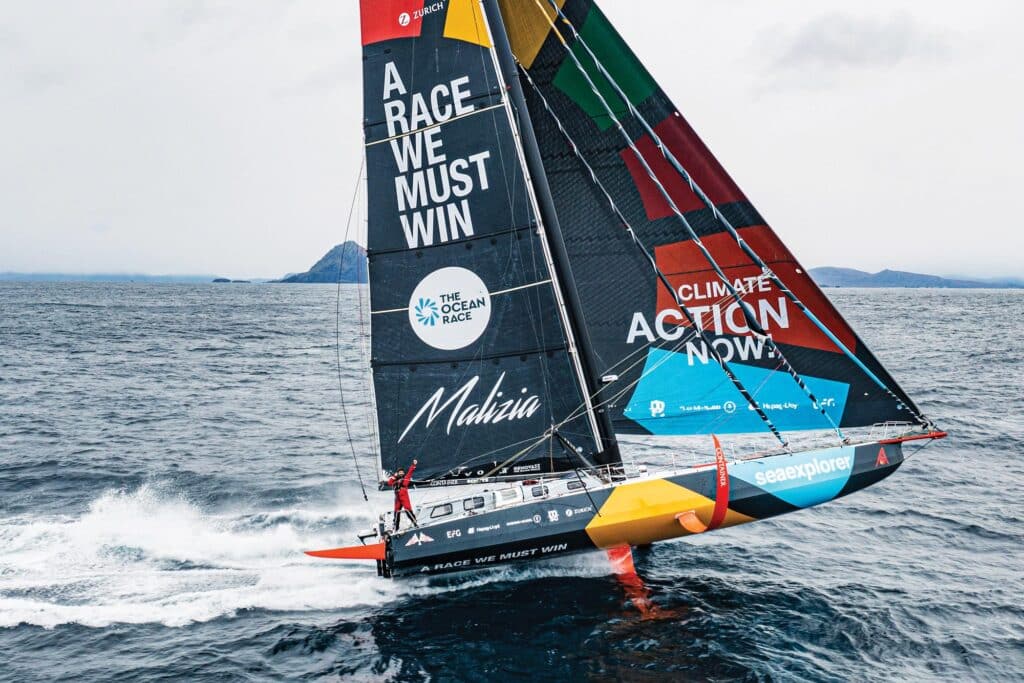
Back in the day, when I first started covering round-the-world races like the Volvo Ocean Race and the Vendée Globe for yachting magazines and newspapers, the most engrossing stories came from the Southern Ocean legs: the mystical, sometimes mythical waters spinning around the southern extremes of the planet. Known by the legendary nicknames of the bands of latitude they encompass—the roaring forties, furious fifties and screaming sixties—these locations tantalized me with tales of huge seas, big breeze and derring-do. I became personally obsessed with sailing there myself, a goal that was realized about 20 years ago when I joined an expedition to sail from Australia to Antarctica across the wild southern sea. It was a pretty epic trip, and, though we got seriously hammered down and back, I’ve always relished the experience. That said, I’ve never felt a huge need to return.
But I still love following the exploits of those sailors who test themselves in those grand, crazy conditions—which is why I was especially excited for the third leg of the current edition of The Ocean Race, the new title for the round-the-world contest formerly known as the Whitbread and then the Volvo. The roughly 14,000-nautical-mile voyage from Cape Town, South Africa, to Itajaí, Brazil, leaving to port the trio of great southern capes—South Africa’s Cape of Good Hope, Australia’s Cape Leeuwin and the formidable Cape Horn off the tip of South America—was expected to take more than a month and represented the longest distance in the event’s combined 50-year history. For the four boats in the race, the expectations of a wild and woolly trip were sky-high. And they were realized.
In the end, there was also an unlikely, come-from-behind winner after five full weeks at sea: German skipper Boris Herrmann’s well-tested foiling 60-footer, Team Malizia.
For Herrmann and his four-person crew, it was a rocky beginning; Team Malizia lost a sail almost at the outset and then soon discovered a nearly foot-long crack near the top of its 90-foot spar. The team considered returning to Cape Town for a repair, but, after co-skipper Rosalin Kuiper was sent aloft to inspect the damage, they instead decided to fix the spar underway. In the meantime, however, on the strength of a record-breaking 24-hour run of 595.26 nautical miles, Team Holcim-PRB stretched out to a nearly 600 nm lead. The chase was on.
One of the most remarkable aspects of following this edition of The Ocean Race is the amazing video footage coming from the racecourse (each boat has a crewmember who supplies the stories and images). The drone shots, especially, in huge seas and with the boats in full foiling mode, are wildly impressive.
And as they sailed into calmer conditions, with the rest of the fleet bringing fresh breeze from astern, Team Holcim-PRB’s lead slowly began to evaporate. By the time the boats approached Cape Horn, Team Malizia had established a tenuous but impressive 30 nm lead.
The leaders clawed their way up the coast of South America to Brazil—almost always in sight of each other—but there was one last obstacle: a 60-knot gale on the leg’s penultimate night at sea. Team Holcim-PRB suffered rig damage in an accidental crash jibe, which gave Team Malizia an 80 nm advantage on the last day of racing to seal the victory.
Back in my cozy armchair, like many fans, I breathed a sigh of relief. Yes, I cherished my own time in the Southern Ocean. This time, I was happy to take it all in from the bleachers.









